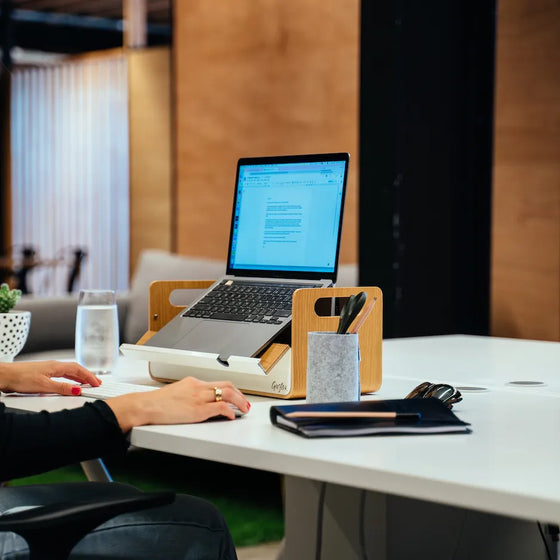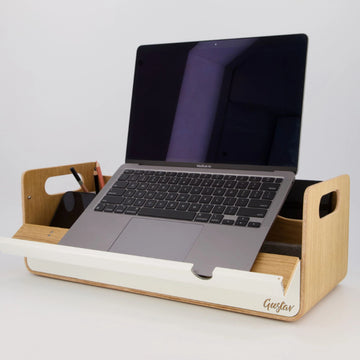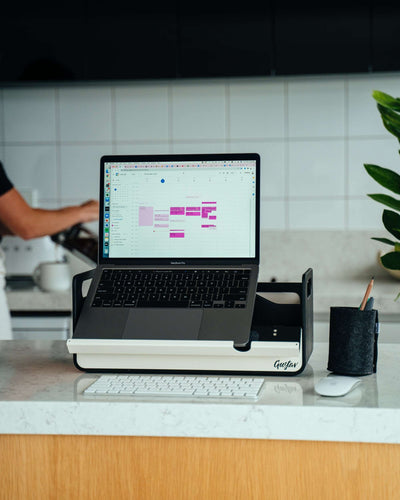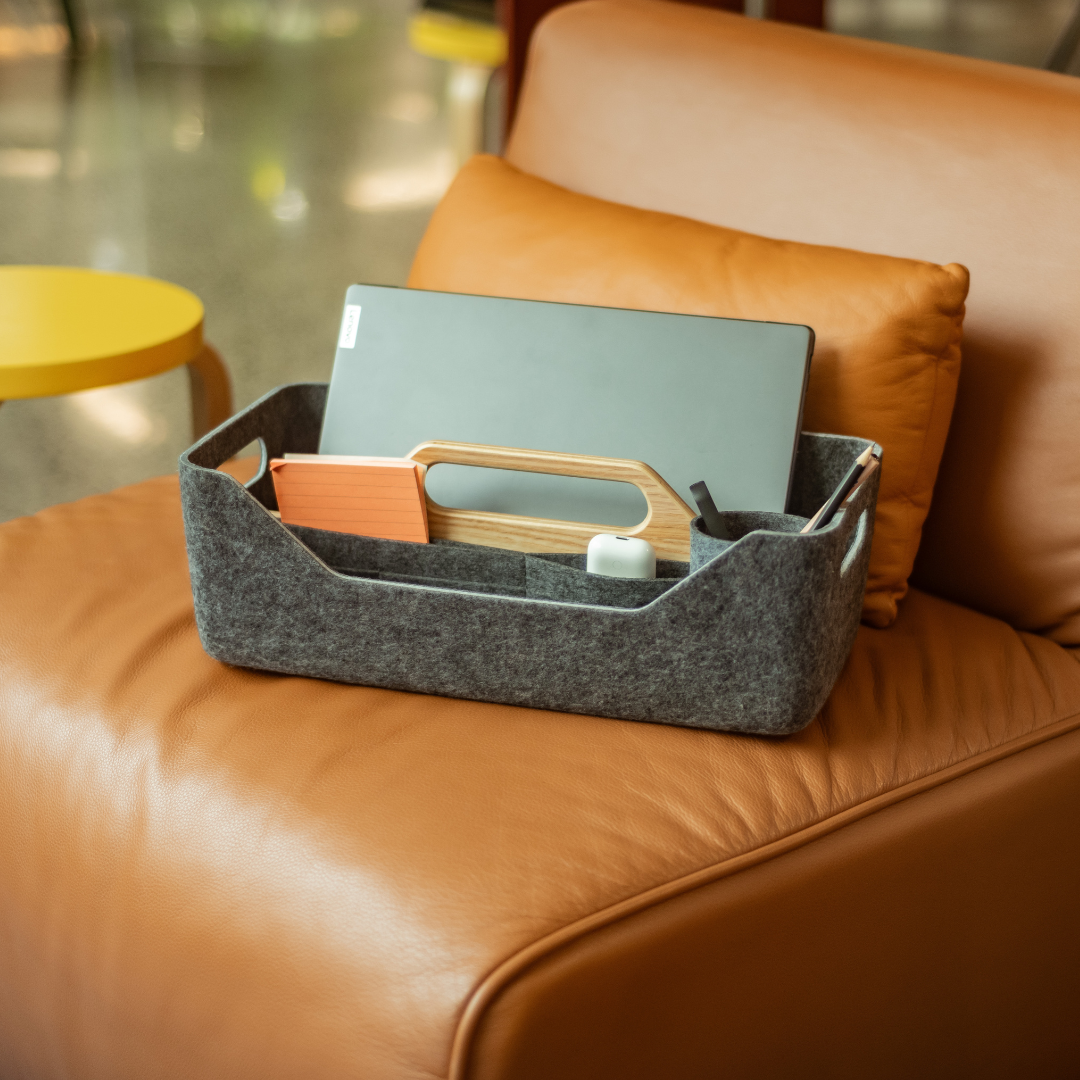How to Work From Your Kitchen Table

With the high chance that home working will become much more common in the post-Covid era (and the reality that we might not all have idyllic home offices any time soon) we thought we’d look at how best to make your temporary workspaces – the garden sheds, the kid’s desks and yes, the kitchen tables – more comfortable places to work.
Comfort
We’ve written about how to sit correctly at work in a previous post, but even with perfect posture, there are things you can do to make life a little more comfortable at the kitchen table.
Firstly – sort out your seat! Whether your dining chairs are a mismatched assortment of yard-sale finds, or the height of designer chic, chances are they were never intended to be sat on for hours at a time. So it might be worth thinking about how you can make things a little more comfortable. You can buy purpose-built cushions for lumbar and rear support (or both!), or if you feel like you might be in this for the long haul, it’s probably worth splashing out on an office chair. (Just make sure you have somewhere to store it once you’re done working!) Either way, a bit of padding will make those long days at the kitchen table a little more bearable.
Once your seating is sorted, think about the rest of your body. Having a mouse is better for your wrists than using a trackpad. Using Gustav will make sure your monitor is the right height will help reduce neck strain.
Organisation
One absolute must when working from your kitchen table is to have some way of separating your domestic routines from your working life. Breakfast things and electricity bills all over the table whilst you’re trying to work will only be a distraction; likewise leaving your files out beyond working hours will mean you never quite feel like you’ve switched off.
One way to achieve this separation is to have a designated vessel for all your work items to make it easy to remove them from the table at the end of the day. While Gustav was designed originally as a tool for workers in ABW environments, it serves an equally useful purpose for the home worker as it stores all essential work items and can be easily packed away at the end of each day. What’s more, it has been designed with ergonomic principles in mind, so the aforementioned comfort issue is dealt with.

Access to Power
It might seem obvious, but making sure you have access to electricity will make life working at the kitchen table a little easier. Laptop leads stretched from the table across the worktops is definitely not recommended – especially if you share your house with family or flatmates. If you don’t have somewhere that you can easily plug into, setting up an
extension cable that will cause minimum disruption and will be as easy as possible to access at the start of the day is one way of making the transition to kitchen table working a little smoother (and will help you avoid power-outs during important Zoom calls!)
Room with a View
Just because you’re at home amongst all your day-to-day clutter, it doesn’t mean that you can’t take some steps to feel a little calmer whilst you’re working. One way to do this is to position yourself to face the most appealing view your kitchen has to offer while you’re working. A window, a clear wall – whatever will help you best concentrate on the tasks at hand and not get distracted by all those other jobs to do around the house. And of course, make sure you’re not facing the fridge – the prospect of snacks throughout the day will become even more tempting than it already is!
To sum up, home working doesn’t look as though it’s going away any time soon. The houses of 2030 may well all have home offices as standard, but for now, while we have to make do with other, more temporary spaces, it’s worth taking these steps to make it that little bit easier. Good luck!









